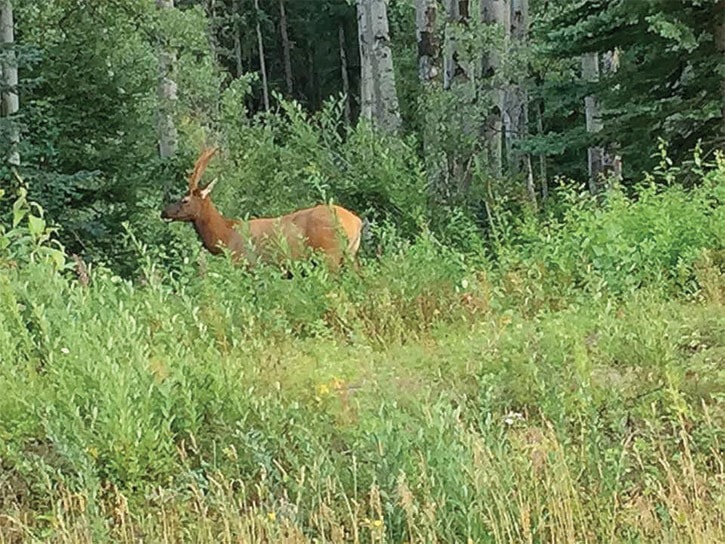A group of farmers and ranchers is holding an elk count this month in an effort to prove funding is needed to stop the animals ruining crops and eating stored feed.
The Skeena Regional Elk Committee (SREC) is asking the public to report any elk sightings on Jan. 23 for a survey of the number of animals in the Skeena region.
The results of the count, which covers the region between Burns Lake and the Hazeltons, will be used to seek funding from the B.C. government for fencing to stop the elk entering farms.
Pleasant Valley Cattlemen's Association president Linda Dykens, who is also a member of the SREC, said elk were a pest that damaged crops and ate feed that was being stored for their livestock.
“They will paw the ground for feed so when you get a newly seeded field, the little seedlings, they're not really rooted all that good yet so it gets destroyed,” she said.
Dykens said farms in the areas near Round Lake and Francois Lake were among the worst affected by the animals.
She hopes the B.C. government will contribute to building fences to keep the elk out.
The SREC plans to use the survey results to help the Ministry of Forests, Lands and Natural Resource Operations (FLNRO) establish an elk management plan.
It also plans to apply for funding to fence the worst affected farms.
“[We are] asking anybody and everybody to write down information because without information we are going to get nowhere,” she said.
“We're trying to get a count and we need that for the ministry [FLNRO] to get a management plan in place for the elk, as to how many the valley can handle and whether they should have some tags issued for hunters.”
According to FLNRO, elk were first recorded in the Bulkley Valley in the 1980s near Deep Creek.
That population grew but remained in the same location until 2012, when wolves are believed to have moved into the Deep Creek area and forced the herd to disperse.
Residents have since reported seeing elk in the Telkwa, Copper River, Babine Lake, Moricetown, Hazelton and Francois Lake areas.
Ministry of Forests, Lands and Natural Resource Operations regional wildlife biologist Bill Jex said favourable winter conditions could lead to growth in those lead to growth in those herds as well.
“It is likely that numbers have remained relatively stable with the inhabiting of new geography since 2013, but if conditions moving forward are favourable, it is reasonable to suspect that elk numbers will grow and increase across this broader area,” he said.
Jex said the ministry was already working on a regional management plan, in partnership with local cattlemen's associations and the Ministry of Agriculture.
Measures could include changing the hunting policy, under which there is currently no open season for elk.
“If a harvest season is deemed an appropriate tool in future to help manage elk numbers and associated impacts, then the ministry will undertake and follow our established general harvest policies and procedures, but linked to the ongoing provincial plan and procedures process,” said Jex.
He said FLNRO would also explore non-hunting related measures or linkages with existing programs.
The Ministry of Agriculture runs the Agriculture Wildlife Program (AWP), which compensates farmers for damages caused by wildlife to unharvested forage crops, field corn grown for animal feed, and grains.
Ministry staff will meet with Bulkley Valley producers on Jan. 30 to explain the program, offer enrollments and provide information on other risk management programs.
But Dykens said some farmers considered existing government programs like the AWP to be cumbersome and untrustworthy.
“A lot of people don't like government programs like that because they say 'well they just come up with excuses that it's not covered' and a lot of people just hate the paperwork end of it,” she said.
“You've got to keep track of everything, you've got to remember dates and somebody has to come and inspect your fields.”
She said the programs did not provide for smaller producers who bought their hay instead of producing it.
Although Dykens admitted that fencing would be costly for the B.C. government, she believed it was the most effective method of managing problems with elk.
The Ministry of Agriculture told Black Press it has a $1.5 million fund dedicated to reducing significant crop losses due to wildlife in situations where other measures are not practical.
The funding is available for mitigation projects and activities, which could include fencing, covering crops or relay cropping.
To participate in the Jan. 23 count contact Linda Dykens on 250-845-3013.
